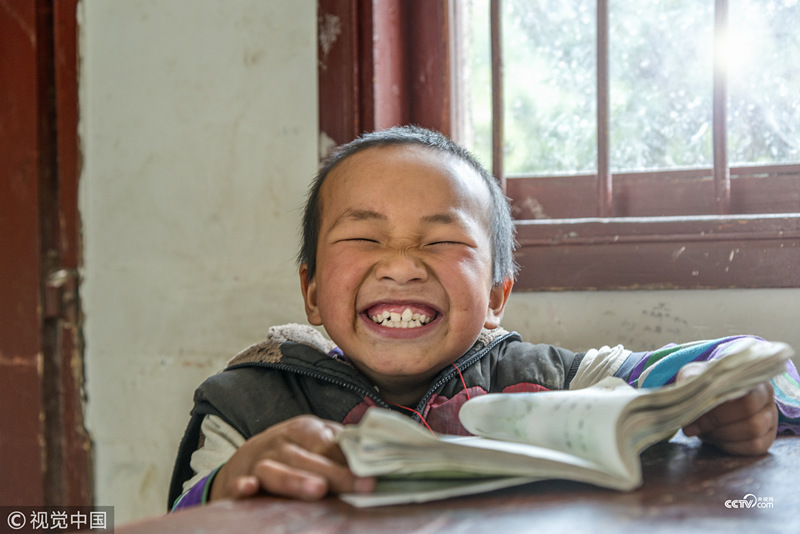Full coverage: China's reform and opening-up, 40 years on
By Tom McGregor, CCTV.com Panview commentator and copyeditor
Editor's note: 2018 marks the 40th anniversary of China's 'reform and opening up' that opened the doors for a more prosperous China that helped hundreds of millions of Chinese citizens escape poverty as the nation had enjoyed rapid economic growth and development. CCTV.com takes a closer look at Beijing's comprehensive reforms with a series of special reports focusing on various fields where tremendous changes have taken place ever since the introduction of the policy.
In December 1978 when the late Chinese leaders Deng Xiaoping had announced a policy of reform and opening up to jumpstart the domestic economy with free market measures that would encourage the Chinese to earn more money. There were many challenges that confronted the country.
China was still mainly rural country where a large majority of its citizens were working in the agriculture sector. Additionally, many Chinese were not properly educated and lacked basic knowledge skills to succeed in jobs that required intellect over physical strength.
According to statistics compiled by China's Ministry of Education, in 1978 only 1.4 percent of all college-aged Chinese were attending a higher education institution. Among adults, very few Chinese had a college diploma and the prospects for educating all Chinese in the years to come, was considered a wild fantasy even for the optimists working the field of education.
Nonetheless, in order for China’s reform and opening up to succeed at the early stages, Beijing realized that its citizens must gain more knowledge and wisdom to adapt to the countries fast-changing economic and social conditions. Plans for urbanization, industrialization and modernization were underway and that meant the Chinese would have to learn new job skills and behaviors to gain full employment status so families could enjoy better standards of living.
But Beijing could not reform the nation’s entire education system overnight, since China holds a huge population and large land mass. To teach all children, you had to open and run schools in isolated villages of the country. But many teachers preferred to work in the cities, since they could receive higher pay, get better training and not feel lonely living so far away from friends and family.
Meanwhile, the concept of building schools that met the same standards in quality of education and teachers’ qualifications nationwide could not be achieved until China’s economy had enjoyed higher GDP (gross domestic product) annual growth rates and rapid development.
Accordingly in the beginning stages of education reforms, Beijing focused more on improving higher education institutions and schools in urban zones, since the government could quickly shift funds over there and supervise its management to prevent corrupt practices.
By supporting better universities that gave hope to Chinese parents and young students who all aspired for a brighter future. Hence, the National Higher Education Entrance Examination, which is known in Chinese as the Gaokao, was fully resumed beginning in 1977.
The Gaokao is a test taken nationwide by all senior high school students and the results and their rankings would determine which universities they were permitted to enroll in. The better score a student had achieved had meant they could study at a more prestigious Chinese university, which would open doors wider for more lucrative career opportunities.
The Gaokao had inspired many young Chinese to attend colleges and universities and last year alone - June 2017 - over 9.4 million students sat for the exams. The overall results are stunning.
In 1986, the Ministry of Education adopted a law requiring 9-year compulsory and full-coverage education and as of 2016, 87.5% of senior high school-aged students had graduated, while 42.7% of China’s college-aged were attending some form of higher education, such as universities, colleges, vocational training and continuing education programs.
China’s society has risen to greater heights with a stronger economy, more advanced cities and even the rural regions are enjoying better prospects. Now is the time for Beijing to march ahead on improving schools at isolated villages so children of all ages and from anywhere in the country can enjoy equal and fair education opportunities.

The world’s largest education system can be found in China, but considering the remarkable achievements that have already been made, we can expect even rural students to witness dramatic progress in the education they can receive in the years ahead.
Beijing has also granted additional funding for distance learning and digital education that allow students to learn from teachers on computers and mobile devices. The future of rural education will likely lead to a more digital platform.
(The opinions expressed here do not necessarily reflect the opinions of Panview or CCTV.com. )

Panview offers a new window of understanding the world as well as China through the views, opinions, and analysis of experts. We also welcome outside submissions, so feel free to send in your own editorials to "globalopinion@vip.cntv.cn" for consideration.
















